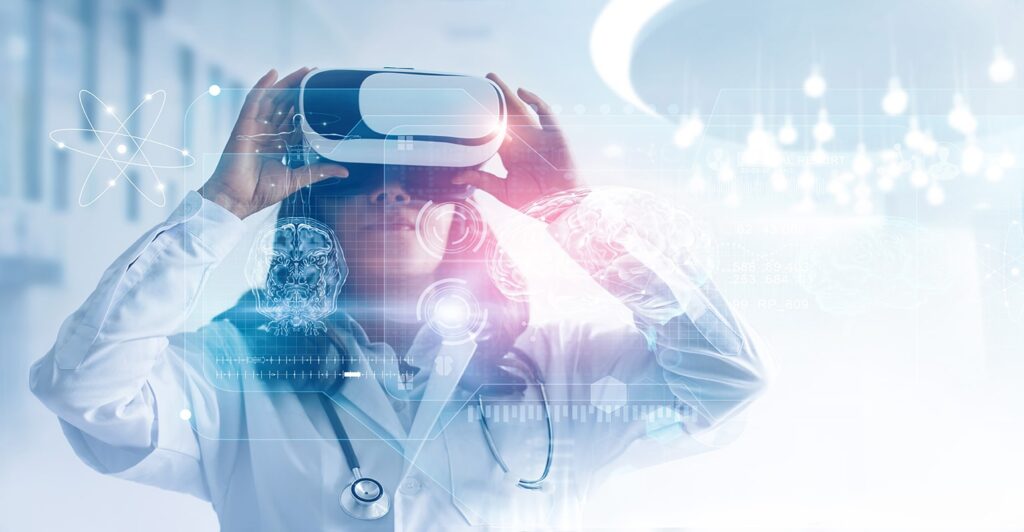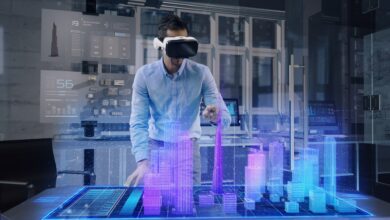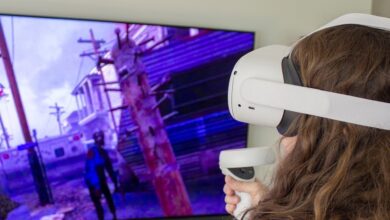Introduction to VR in Healthcare
Virtual reality (VR) – sounds pretty futuristic. Yet, it’s already a reality in many sectors, including healthcare.
Understanding VR
Let’s define VR before moving further. A computer environment called virtual reality separates the user from the real world. USERS CAN INTERACT WITH A SIMULATED ENVIRONMENT through VR devices such as headsets or gloves. The possibilities for its applications are endless and only limited by our imagination.
-
The Evolution of VR in Healthcare
VR’s voyage into the healthcare sector is nothing short of revolutionary. Over the past few years, it has evolved from experimental tech to a tool with a real impact on patients and professionals.
The Impact of VR in Healthcare
-
Patient Care
Imagine reducing pain not with pills but with VR. Sounds like a sci-fi movie? Well, it’s happening right now. VR can distract patients from their pain by immersing them in engaging digital experiences.
-
Physical Therapy
VR is breaking barriers in physical therapy too. It aids in rehabilitating patients with conditions like stroke, providing an engaging and controlled environment to regain their skills.
Medical Training
-
Surgical Simulation
Remember when pilots used flight simulators for training? Now surgeons are doing the same with VR, gaining valuable practice without risk to actual patients.
Emergency Response Training
VR can replicate high-pressure scenarios, preparing medical professionals for emergencies. Calm under pressure – thanks to VR.
The Future of VR in Healthcare
-
Predicted Developments
Given the benefits, VR’s future in healthcare looks bright. Expect more precise simulations, immersive rehab programs, and even virtual consultations.
-
The Role of Tech Companies
Technology development is necessary for VR in healthcare to succeed. The IT sector, which consists of both start-ups and established businesses, is a key player in determining how this cooperative endeavor will develop in the future.
Challenges and Limitations
-
Accessibility and Affordability
Though promising, VR’s adoption faces challenges. High costs and lack of access are significant hurdles that must be overcome.
-
Technological Limitations
While VR is advancing rapidly, it could be better. Technical issues can affect the user experience and, therefore, its efficacy.
Conclusion
The fusion of VR and healthcare opens the door to incredible possibilities. Despite the challenges, it’s a frontier that promises to redefine how we perceive and experience healthcare.
FAQs For Virtual Reality in Healthcare
What are the benefits of VR in healthcare?
VR offers many benefits, from enhancing patient rehabilitation programs to providing risk-free training for medical professionals.
What is the future of VR in healthcare?
The future of VR in healthcare is expected to encompass more precise simulations, immersive rehab programs, and virtual consultations.
What are the challenges of VR in healthcare?
Challenges include high costs, lack of access, and technical limitations affecting user experience.
How do tech companies influence VR in healthcare?
Tech companies, from start-ups to giants, play a crucial role in driving the technological advancements necessary to integrate VR in healthcare successfully.
Rate our Article(VR in Healthcare: A Comprehensive Guide)How much do you like our Article








